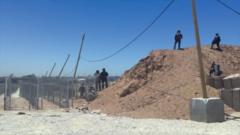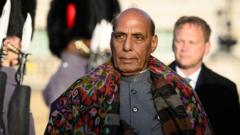Amid escalating internal conflict, Pakistan is intensifying its drone campaign against militants within its borders. While the government remains reticent about the program, reports indicate significant civilian casualties, echoing the controversies of past U.S. drone strikes, fearing that such actions could further alienate the populous.
Pakistan's Covert Drone Warfare: A Shift in Counterinsurgency Tactics

Pakistan's Covert Drone Warfare: A Shift in Counterinsurgency Tactics
As Islamist militancy grows, Pakistan’s military adopts drone strikes, mirroring tactics previously condemned in U.S. operations.
Pakistan’s evolving military approach has increasingly focused on drone technology as a solution to counter the rising tide of Islamist militancy and separatist insurgencies. Although not officially recognized by the government, drone operations within Pakistan have become a significant tool for monitoring and targeting militants, particularly in the volatile areas bordering Afghanistan.
Historically, Pakistan has been vocal in its criticism of U.S. drone strikes that targeted Islamic extremist groups, emphasizing the resulting civilian casualties that marred those operations. However, in a marked shift, the Pakistani authorities now find themselves employing similar strategies. Despite their insistence on more precise and effective drone capabilities, reports persist of collateral damage impacting civilians, reminiscent of past U.S. controversies.
This resurgence in drone use signifies a response to the deteriorating internal security situation and reflects a broader trend of militarization in counterinsurgency operations. While the military justifies these actions as necessary for national security, the implications of civilian casualties risk galvanizing resentment and further instability among affected communities, posing long-term challenges for the government.




















